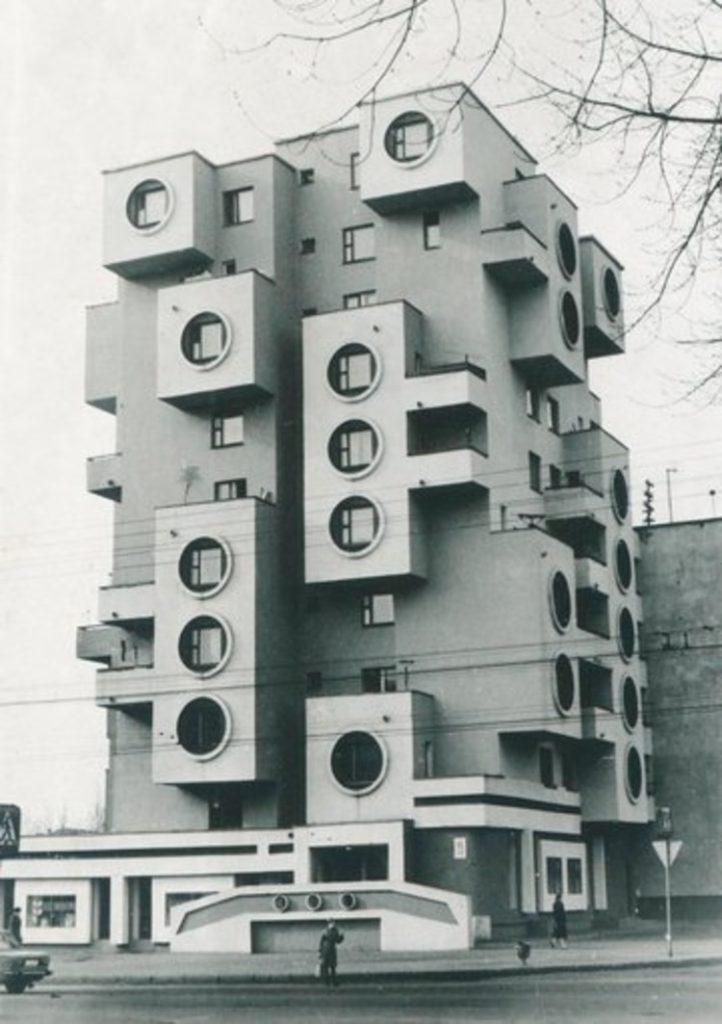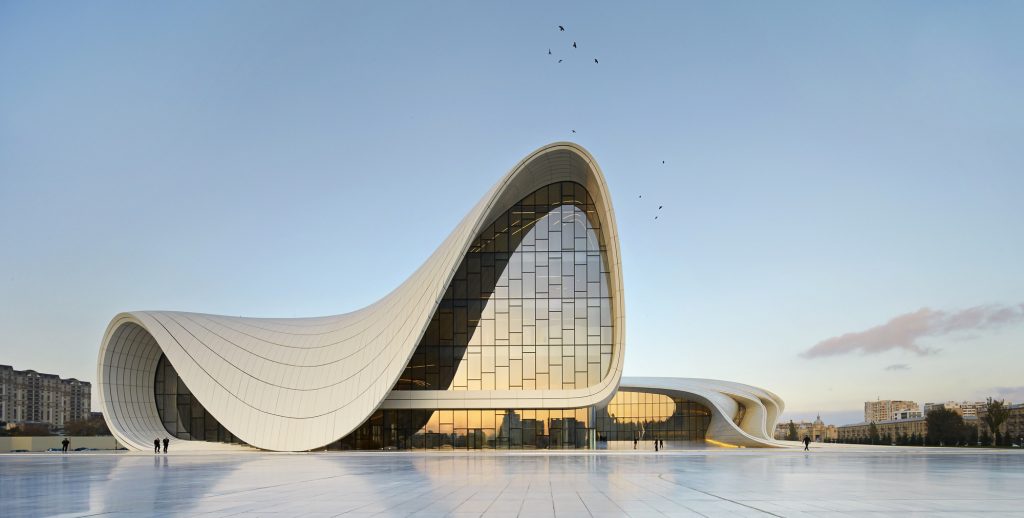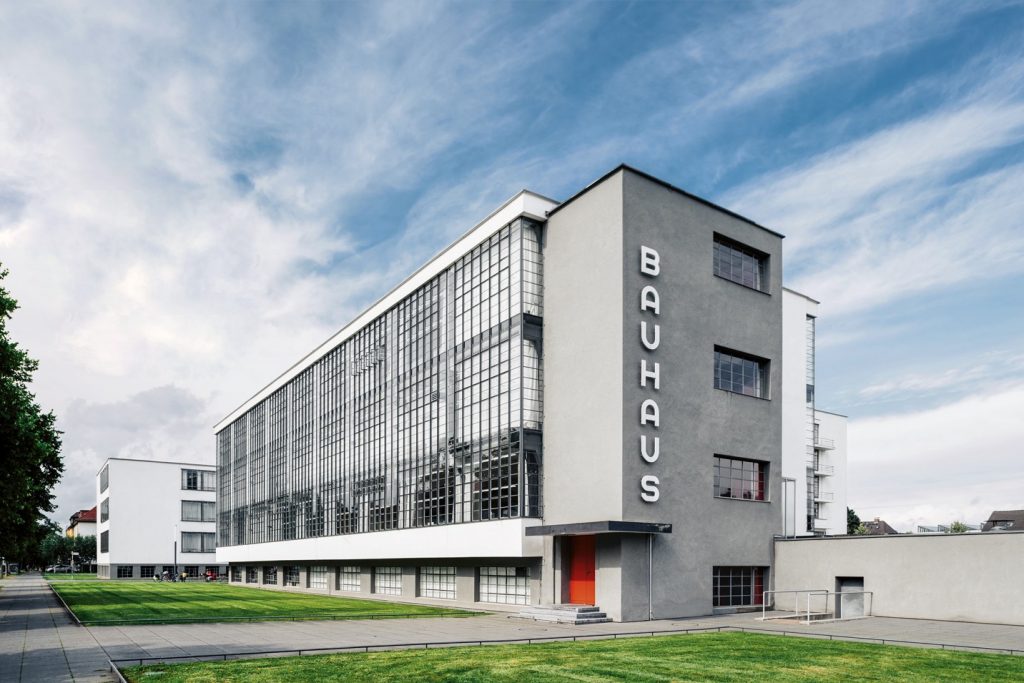ROME
5th century AC
From the 5th century AC onwards, the Roman Empire disintegrated due to the pressure of the barbarian tribes and after the death of Theodosius, the empire was divided into Eastern and Western Roman Empire. Finally, in 476 AC, the western Roman Empire disappears, while in the east it is maintained and developed, with its center in Constantinople. Because of that, in the 5th century the construction of Roman public buildings was practically paralyzed.

- ROMAN LEGACY
What was left of the Roman Empire became Christianized. Churches and other religious buildings became the only important architecture.
The glory of pagan imperial Rome was lost, and a new Christian empire was established in the East. With this, pictorial, sculptural and constructive techniques were lost, as well as everything that was not related or justifiable in the new religion.
THE BYZANTINE
Byzantine architecture is preeminently religious with an emphasis on the interior.
The only architectural ensemble of relevance is the Great Palace of Constantinople, a citadel fortified with imperial palaces, military installations, public buildings and around thirty churches.
As a result of the proliferation of charitable activities, there was also a demand to construct buildings for such purposes, such as hospices, hospitals and orphanages. As well as those, roads were modified in order to connect religious buildings.
All these type of changes were made mainly with stone.
Hagia Sophia represents the union between the Empire and the Church, a
cube topped by a dome. It is the combination of the central plan of the Roman buildings with dome, and the Roman basilicas.
The dome is placed on four triangular concave pendentives that serve as a transition between the circular shape of the dome and its rectangular base.
In the interior, the use of mosaics that clad the domes with dim and trembling light, tried to recreate the heaven on earth.
Byzantine architecture is the ARCHITECTURE OF HEAVEN, full of symbolism.
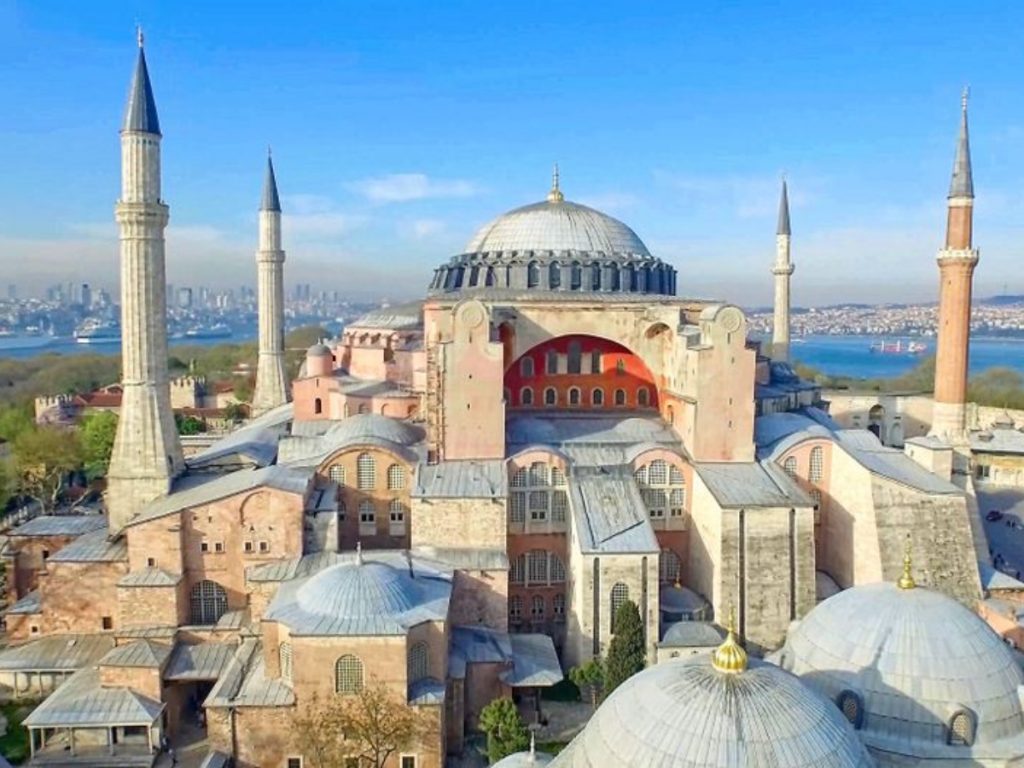

- MILITARY ARCHITECTURE
The new cities develop in very small areas compared to the past, in order to concentrate resources and defend better in case of attack.
The implementation and maintenance of defensive systems, as well as the collection and distribution of water, were of great importance.
The city became to be restored, changing the ancient walls by adding a large number of fortified centers. It is the passage from the city to the military fortification.
PRE-ROMANESQUE
The government system was transformed to a pyramidal system of vassalage.
In medieval pre-romanesque architecture, in addition to churches and monasteries, castles were developed.
- THE LOMBARDS
They were Romanized populations and converted to Christianity since the 5th century.
they acquired a uniform style, which is based on the ideological and conscious use of the plundered elements of Roman buildings, which are reused with a greater symbolic use and well integrated with the new elements of good quality. Also, they had great training in goldsmithing.
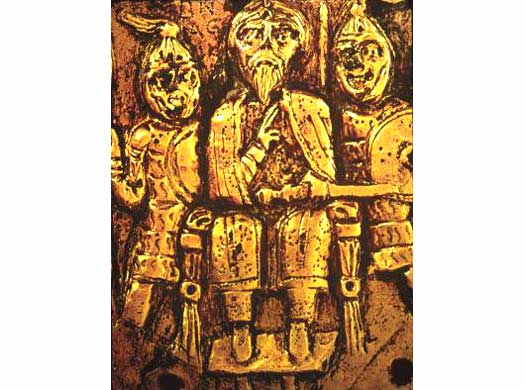
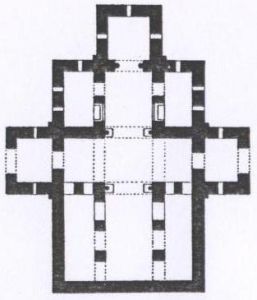
- THE VISIGOTHS
Between the middle of the 7th century and the beginning of the 8th century, an ecclesiastical architecture was developed that takes up the model of the traditional Roman basilica and delineates a central floor typology with massive forms.
Among the most outstanding buildings are the churches of San Juan de Baños, San Pedro de la Nave and São Frutuoso de Montelios.
- CAROLINGIAN EMPIRE
They are characterized by the desire to reaffirm classical art in order to emulate the Roman Empire. For this reason, a systematic recovery is carried out that involves different artistic influences.
For the first time, monumental buildings such as palaces, cathedrals and monasteries were built again.
A significant contribution to Western architecture was the introduction of the Westwerk, a very high building attached in front of the entrance of the most important churches, in an attempt to create a monumental façade.
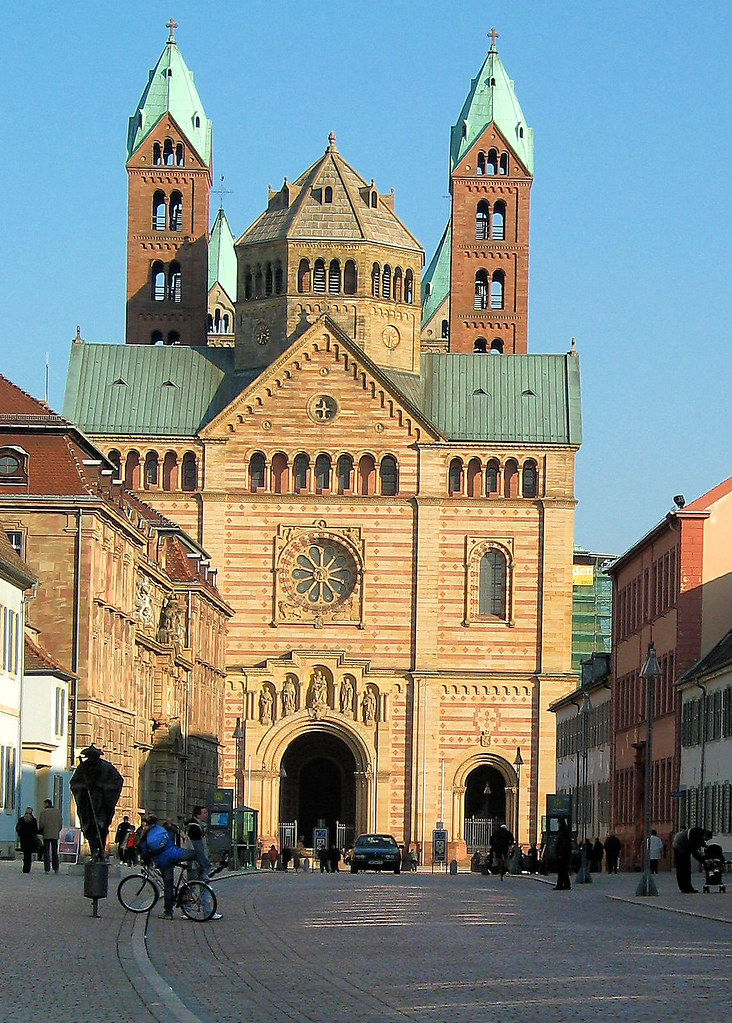
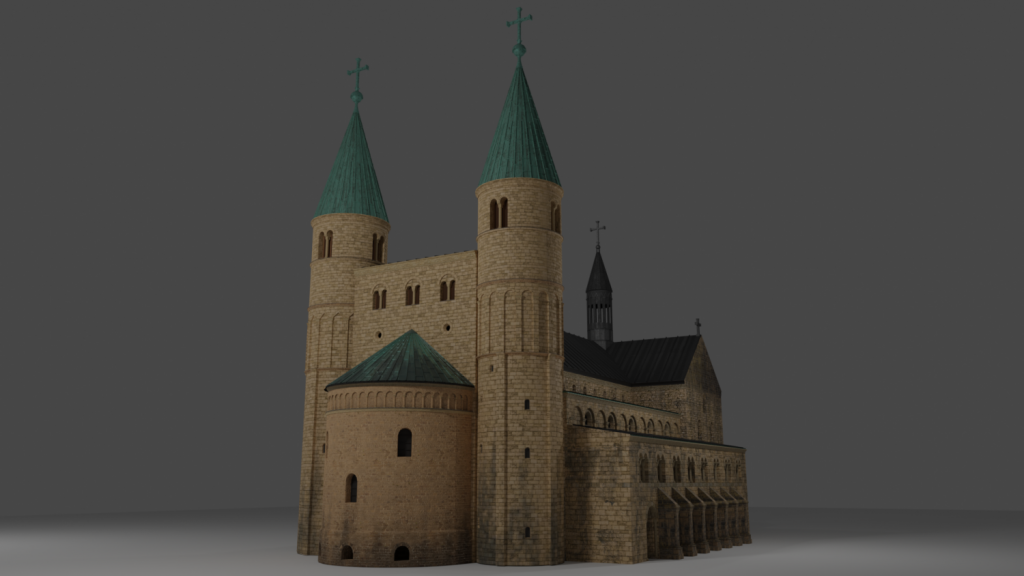
- THE SAXONS
They dedicated themselves to the construction of religious buildings such as abbeys and cathedrals, inspired by Roman basilicas and also using the westwerk and double apses.
Among the innovations of this architecture is the use of galleries or tribunes, as well as the alternation of supports (pillars and columns).
ISLAMIC
Islamic culture and architecture developed in most of the Iberian Peninsula between the 8th and 15th centuries.
A common feature of Islamic architecture is the use of towers and water. Towers are defensive elements but also viewpoints over the landscape. In the gardens they design water routes and introduce different aromatic plants.
Islamic architecture produces new architectural types such as mosques −places for prayer and gatherings− and
baths for hygienic and religious purposes.
The decorative motifs are based on the repetition of geometric motifs. The ornamentation serves to create an atmosphere through plays of light and color.
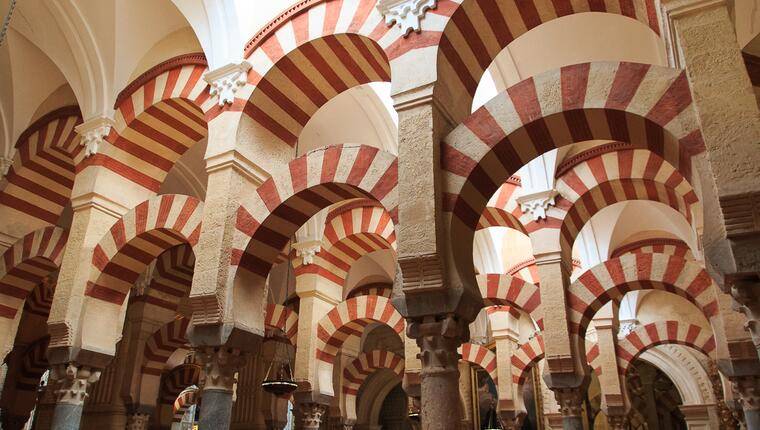
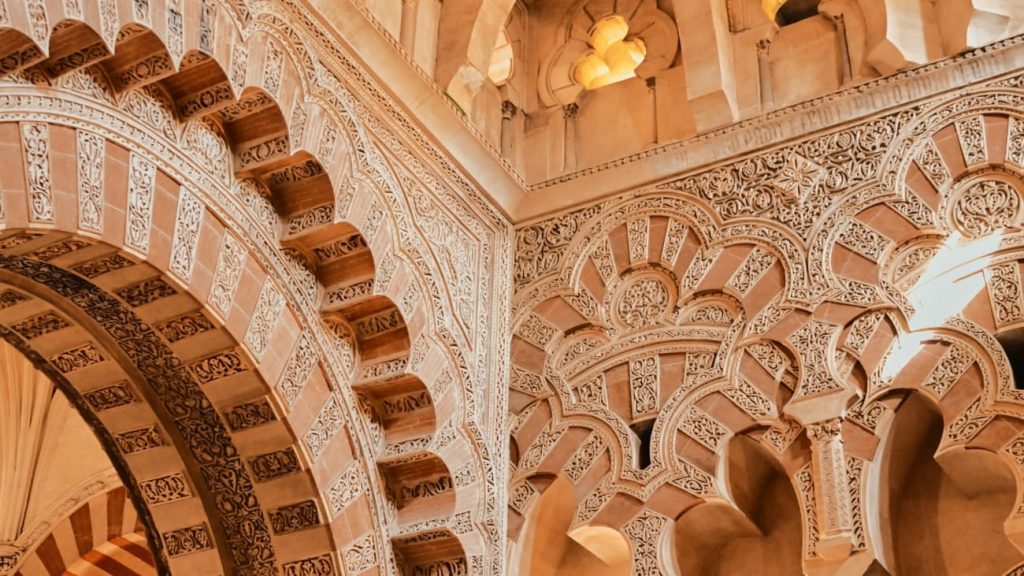
ROMANESQUE
Romanesque is associated with the art of the Normans, who in these centuries experienced their peak and maximum diffusion.
Due to the political instability, the feudal lords usually fortify the cities and the palaces that become castles (residences and military squares).
Due to the evangelization of religious orders, the Romanesque is spread throughout Europe, giving rise to a multitude of variants, with a large presence of monasteries, abbeys, hospitals …
The Christian religion increased its political and international role. It started to undertake a work of education and mass evangelization, to such an extent that architecture and art are loaded with symbolism (which shows up especially in the delicately sculpted capitals) and lose realism.
Religious buildings are books made of stone, characterized by large masses and heavy proportions, which are based on the use of the semicircular arch and the Roman vaults.
Three successive churches were built to accommodate a growing community. The last of these, Cluny III, became the largest temple in Christendom.
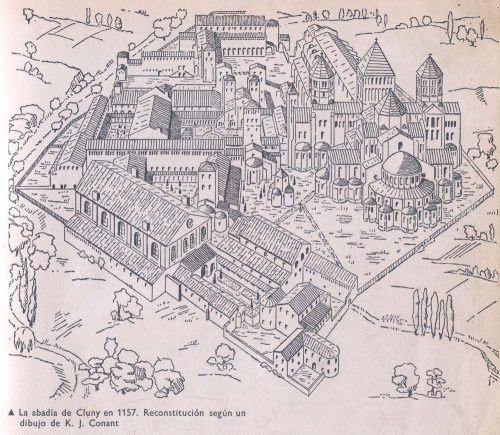
GOTHIC
Considered as well as the art of barbarians, iIt spread mainly in the territories furthest from the classical context and therefore more distant from their culture.

The emergence of an artisan and commercial middle class makes a new type of city flourish: the burgs. This will become a promoter of art and architecture.
The Norman builders began to test a novel system consisting of reinforcing the Roman vault with diagonal ribs.
The invention of the pointed or ogival arch is the great innovation of this style.
Unlike Classical architecture, Gothic architecture was able to express the play of forces acting in the building in a condition of dynamic balance.
- CATHEDRALS
The cathedral was the house of God, hence the need to reach great heights that reduce the human scale.
Pointed arch meant the almost total elimination of the walls of the church by colored glass membranes, which represented the scenes of the sacred scriptures.
The catedrals stone structures were made of ashlars, and we could also see the use of pinnacles and needles, which increased the affect of verticality.
The decorations are usually very fine frescoes directly on the stone and sculpture returns once again to naturalistic realism, in order to be more convincing in its educational purpose.
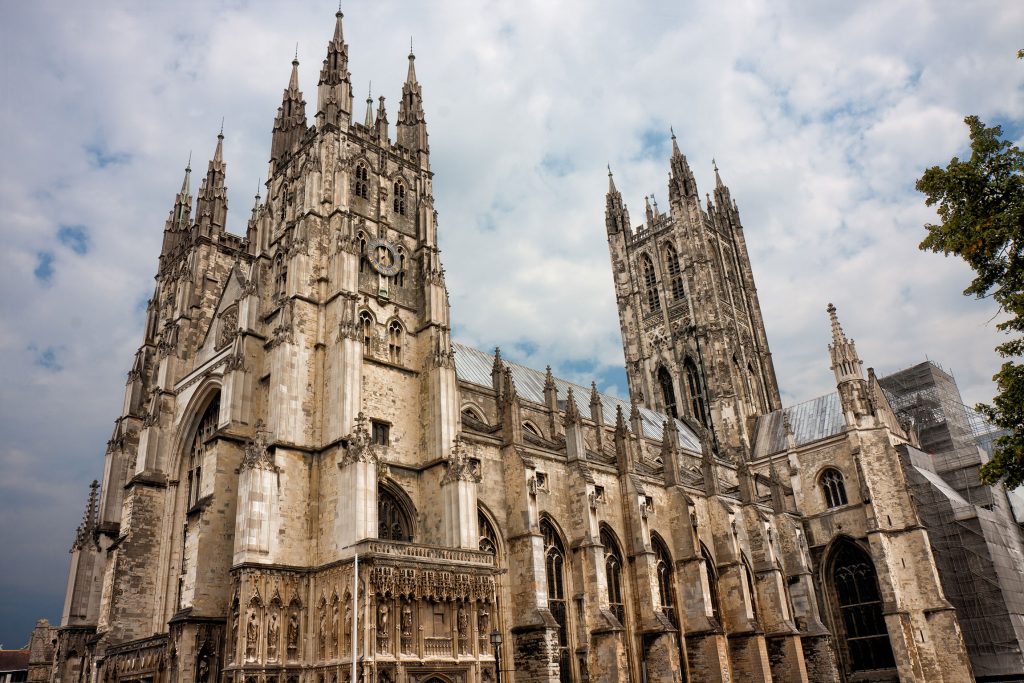
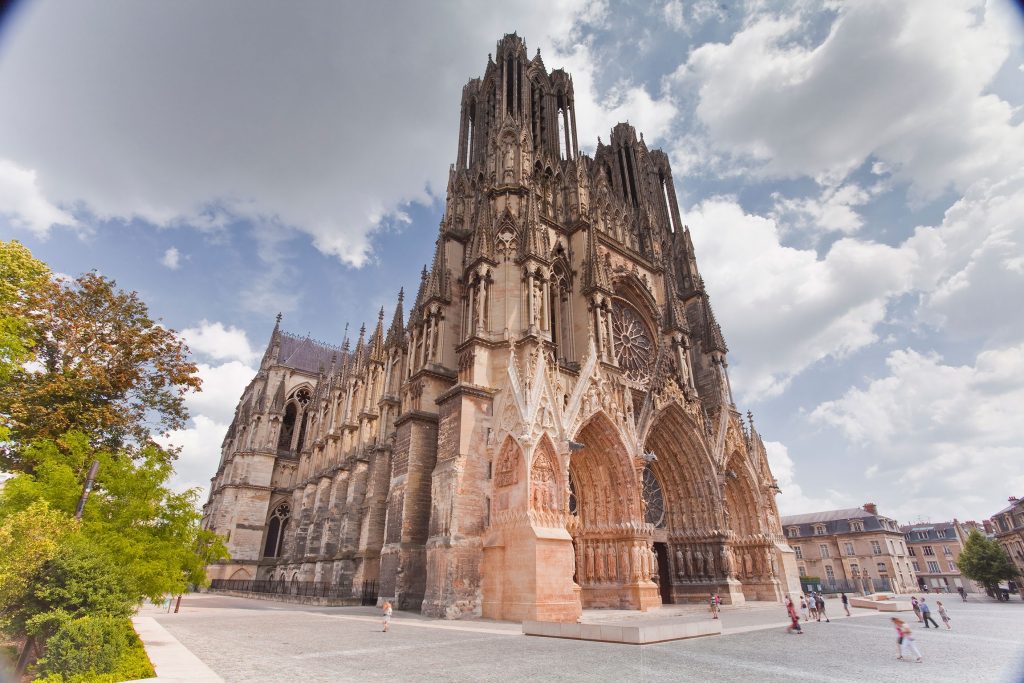
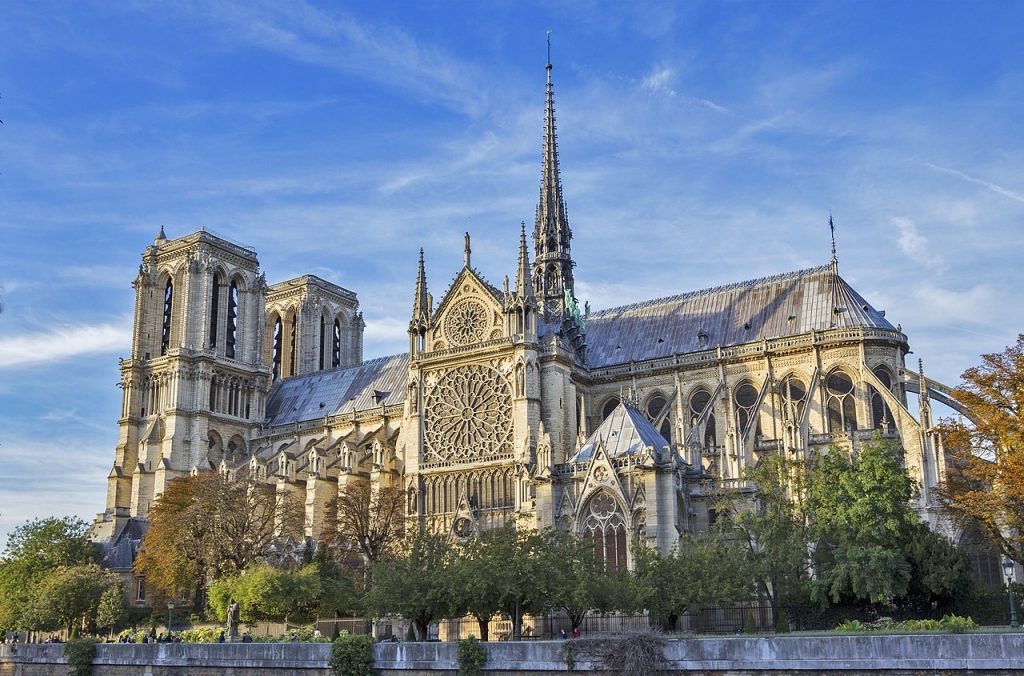
- CIVIL BUILDINGS
There is a multitude of civil buildings, an expression of the new bourgeois social class and its new demands. At this moment, town halls, stately palaces, universities, fortresses, bastions, bridges, bell towers, shipyards are being built…
Also, there is an abundance of commercial markets and buildings for professional guilds. An example from Valencia is the Lonja de la seda.
City councils are also built in cities that are gaining economic and political autonomy. As in Bruges, an expression of the Brabantine Gothic.
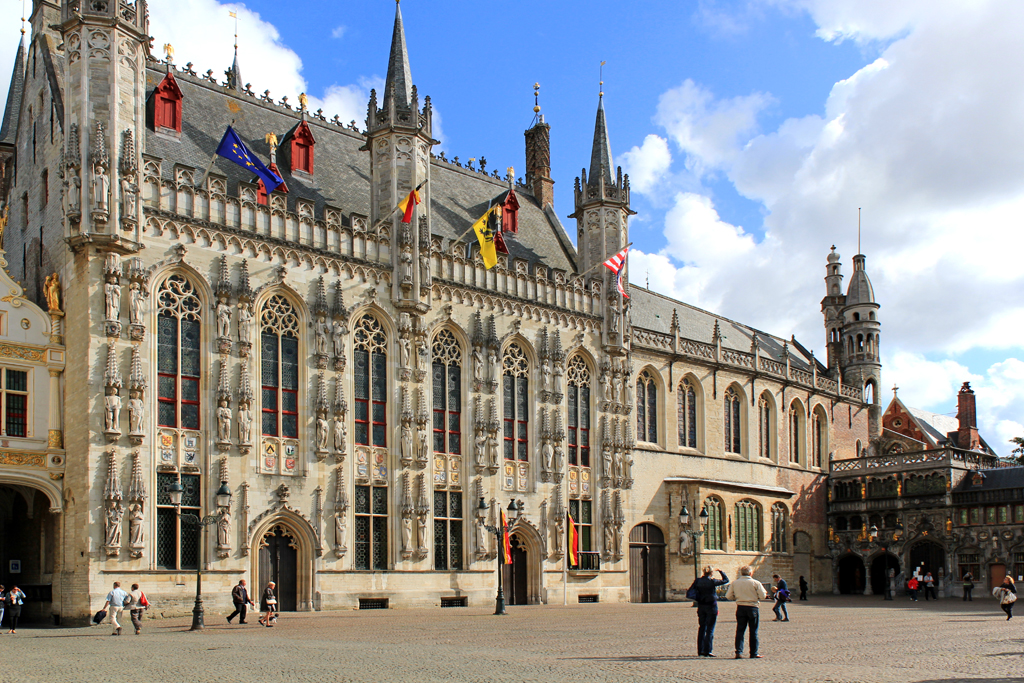
RENAISSANCE
In the 15th century in Italy and mainly in Florence, an important urban culture emerged, so merchants and bankers became protectors of art (patronage) and ordered buildings for themselves (palaces) or for the city (gates, walls, squares, ideal cities…). They will be followed by religious powers.
The Renaissance man trusts in his intellectual capacities, thinks that history is no longer a whole ordered by the hand of God and exalts the human being and his capacity to dominate Nature.
The interest in the recovery of Romanity arose in Italy and then spread to Europe, with the idea of matching the intellectual and artistic achievements of classical antiquity.
Roman works can still be seen directly, and scientific perspective is discovered and Plato’s ideal figures are recovered: the circle, square and equilateral triangle. Hence symmetry and proportion were basic to the project and the system of ideal proportions are in the human body.
So, he new architecture had to be rationally understandable, formed by planes and spaces organized according to clear and decipherable numerical proportions.

REMARKABLE ARCHITECTS:
- Filippo Brunelleschi (1377-1446)
- Leon Battista Alberti (1404-1472)
- Andrea Palladio (1508-1580)
- Michelangelo (1475-1564)
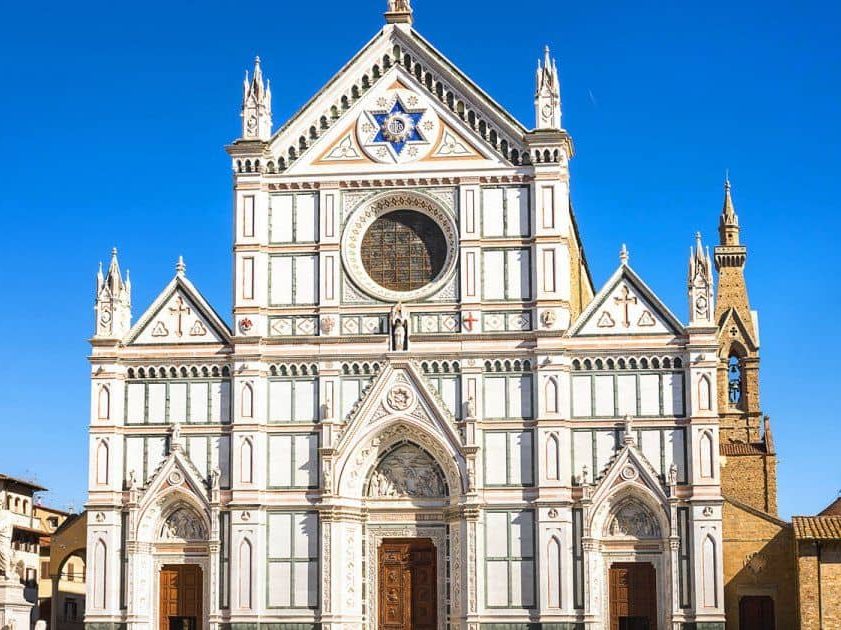
BAROQUE
Derived from the term barrueco (imperfect pearl) used in a derogatory sense by French critics in the 18th century.
Linked to the monarchy, the aristocracy and the Church, it emerged as propaganda and glorification of power, in the formation of national states and in the reaffirmation of the counter-reform church.
Baroque architecture and the subsequent Rococo is an effort to obtain the maximum possible effects from the moulded space, the manipulation of light, colour and sensual detail. The baroque is the spatial liberation of the rules.
The structure took a back seat. The focus was on the visual effect and decoration. The dividing line between reality and illusion is blurred , with decorations that rise towards the sky that frame the scenes.
REMARKABLE ARCHITECTS
- Gian Lorenzo Bernini (1598 -1680)
- Francesco Borromini (1599-1667)
-Rococo
Rococo is an artistic fashion born in the French courtly environments. It begins as fashion in the warm and dreamy interior spaces, which contrast with the conditions of dirt and unhealthy exteriors.
All this will raise the unease of the other social classes which will lead to the French Revolution.
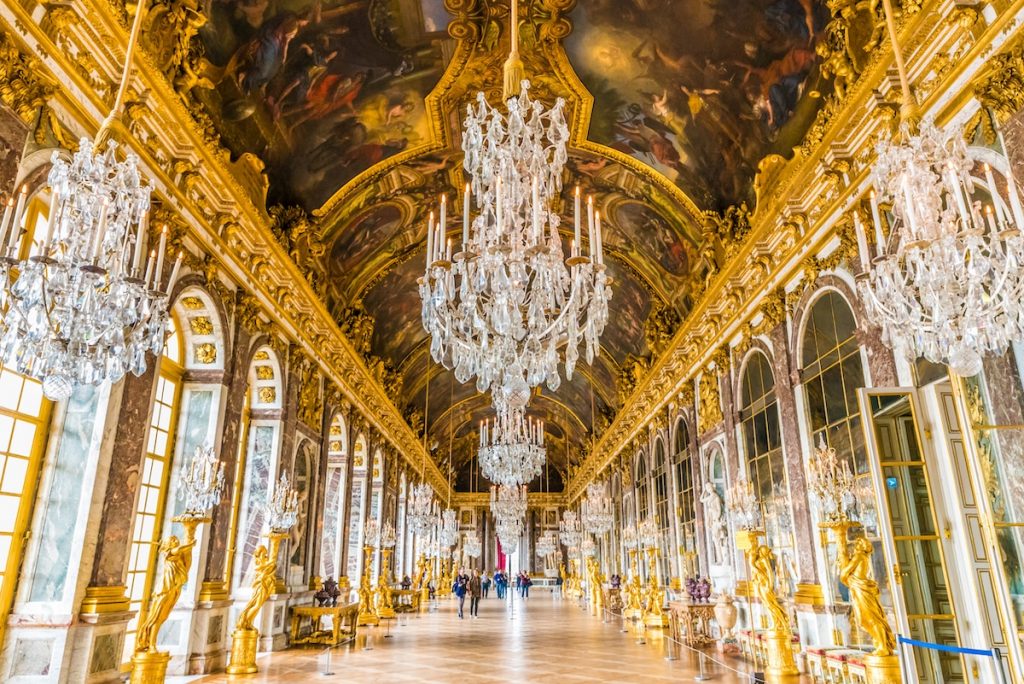
NEOCLASSICISM
The 18th century was an extraordinarily confusing and contradictory historical moment in which Neoclassicism, an incipient Romanticism and the beginnings of the Industrial Revolution coexisted with late Baroque and Rococo.
The 18th century, called the Age of Enlightenment, with the support of the academies, spread a regulated and neo-classical taste.
After the excesses of the baroque and rococo, a radical change towards a rational architecture was experienced, in which the dominion of the structural truth over the visual effect was recovered.
Neoclassicism was the formal expression that reflected in the arts the intellectual principles of the Enlightenment and it was linked to the idea of public service and educational functions of the buildings. It was in this context that the museums were born with a didactic function.
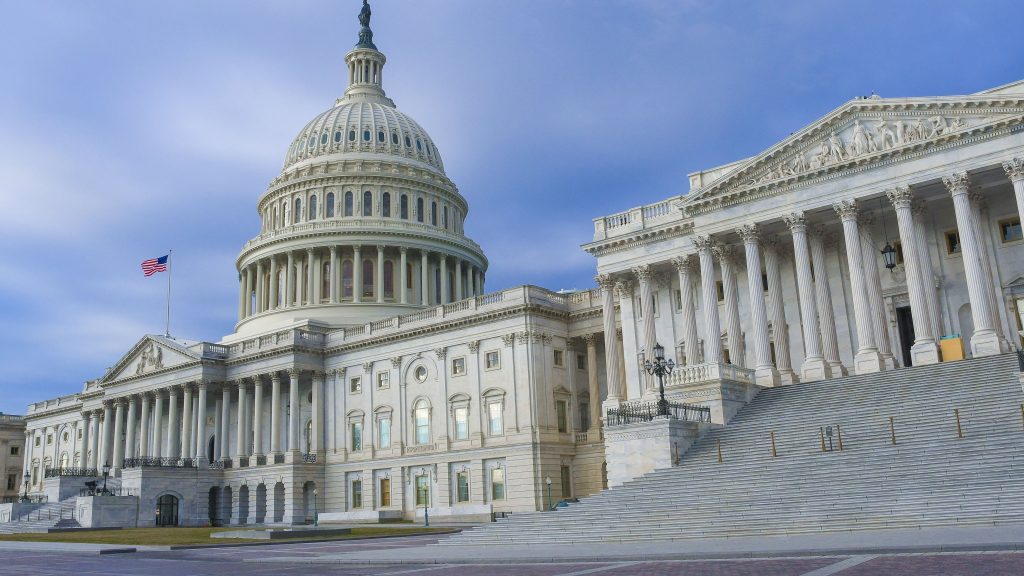
REMARKABLE ARCHITECTS
- Etienne-Louis Boullée
- Claude-Nicolas Ledoux

19th CENTURY

The industrialization of the western world produced an increase in population and a migratory phenomenon towards the cities, which were left insufficient: the walls were demolished, the expansion began with industrial and worker neighbourhoods, new construction typologies appeared (industrial units or naves, stations, hangars, markets, sanitary infrastructures, pavilions…).
Polytechnic schools and international exhibitions are founded, experimenting with new materials and shapes.
Opposed to the industrialization of society, some movements like Historicism, Exotism or Eclectism bloomed. And, on top of that, it appeared a new movement appeared: REALISM (Impressionism and Postimpressionism), which showed the population the crude reality.
20th CENTURY
- ART NOVEAU OR MODERNISM
It was a consequence of the affluence of the bourgeoisie. Art Nouveau was a new and modern style, inspired by nature, simple geometry, curves and symbols. Also, although they refuse to acknowledge the past, they praise Japaneseism and oriental art and romantic symbolism, but also medievalism. The main representative of modernism in Spain is the Catalan architect Antoni Gaudí.
- AVANTGARDE: The openness to another cultures made new points of view the necessity to appear in order to run away from the conventional art.
- BEFORE WARS: The invention of photography demystified realistic art.
- Expressionism
- Cubism
- Futurism
- BETWEEN WARS: The aim was to provoke and ridicule Western culture.
- Contructivism
- Neoplasticism
- Bauhaus rationalism
- POST-WARS:as there were many movements, the different architects were classified.
- BEFORE WARS: The invention of photography demystified realistic art.
